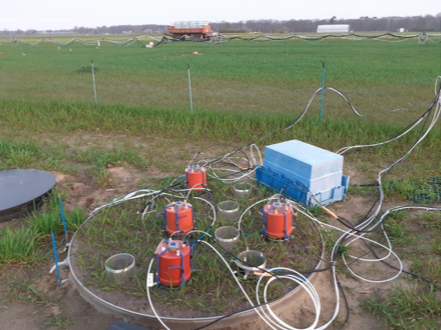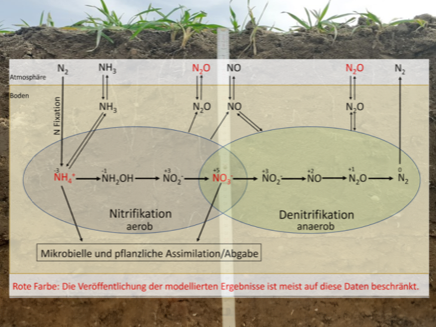In an article for the flagship journal AGU Advances, the scientists around Balasz Grosz, Rene Dechow and Reinhard Well from the Thünen Institute of Climate-Smart Agriculture justified their unequivocal answer so convincingly that the article was selected and published by the editors as an "Editor's Highlight".
The question was posed as part of the joint DASIM and MinDen projects, in which the Thünen Institute is largely involved. Both projects aim to provide the prerequisites for improving the nitrogen efficiency of agricultural ecosystems and reducing harmful emissions by measuring and modeling denitrification. Denitrification is the conversion of the nitrogen bound in nitrate to molecular nitrogen by bacteria, which in turn generate energy from it. The intermediate product is nitrous oxide (N2O), one of the greenhouse gases. Nitrous oxide emissions from denitrification make up the largest proportion of emissions of this climate-impacting gas from agricultural soils.
Knowing exactly how much nitrate is broken down into nitrogen gases helps agriculture, for example, to reduce nitrous oxide emissions and the loss of fertilizer nitrogen. However, robust data sets that can be used to represent nitrogen fluxes from denitrification models in such a way that they correspond to reality are rare. There are many reasons for this: on the one hand, suitable measurement methods are only available to a limited extent. On the other hand, the conversion processes take place extremely differently depending on location and time.
In the article, which takes up the international discussion about gaps in existing models, the researchers explain, among other things, how important it is to publish complete nitrogen and carbon balances. Numerous biogeochemical models calculate the entire nitrogen balance. However, during the review process, journals and reviewers often insist on publishing only model results calibrated to measurements.
The authors therefore assume that the reason why there are so few fully modeled nitrogen balances in the literature is that the scientific community is reluctant to support the publication of unvalidated modeled results. In addition, the simulated results may well be unrealistic if they are not backed up by measurements. In their article, the scientists therefore recommend systematically publishing complete nitrogen balances and non-validated results, such as nitrogen emissions. This would illustrate the diversity and uncertainty of different modeling approaches, demonstrate the robustness of the modeled balances, highlight data gaps and, last but not least, facilitate the development of future models.







